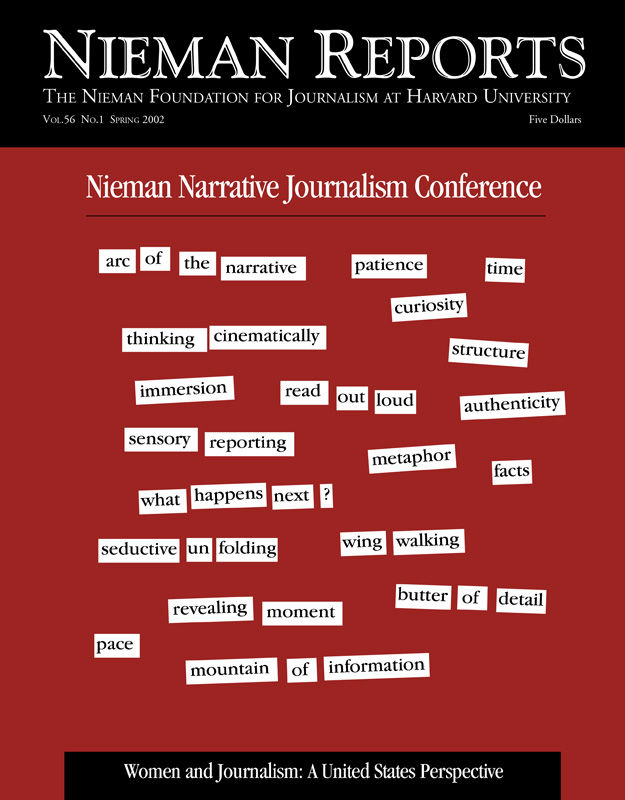Nieman Narrative Journalism Conference
Cambridge, Massachusetts
November 30 – December 2, 2001
Narrative journalism is in transition to a second phase. The first continues—the individual, dramatic phase in which lonely reporters get fascinated by the possibilities of a story and bring it in, tussling with fellow staffers and editors as they haul it aboard. Editors call it fluff at first, then take it seriously because they see great copy, acknowledge the substance and the warmth of it, hear from pleased readers, hear good things from advertisers, see circulation lift while serials are running, and see how well it’s doing in the big papers such as The New York Times and The Washington Post and The (Baltimore) Sun and exemplary papers such as the St. Petersburg Times and The Oregonian.
The second stage involves finding useful and comfortable ways in-house of adjusting to the uneven scheduling of narrative writers’ time, finding space, finding and assigning flexibly the attention of those editors who can best handle this special copy. And beyond those organizational changes, the second stage also involves coming to more sophisticated realizations of what narrative is for. The first pieces are often about sensational topics—air crashes, dying children, lives shattered by misfortune. Later serials take on less lurid but more complex subjects—education, business, the environment, for example—and they require greater technical proficiency in narrative writing in order to sustain reader interest. This sort of competency is growing, and I see the increased interest in the conference as another good omen for narrative journalism.


